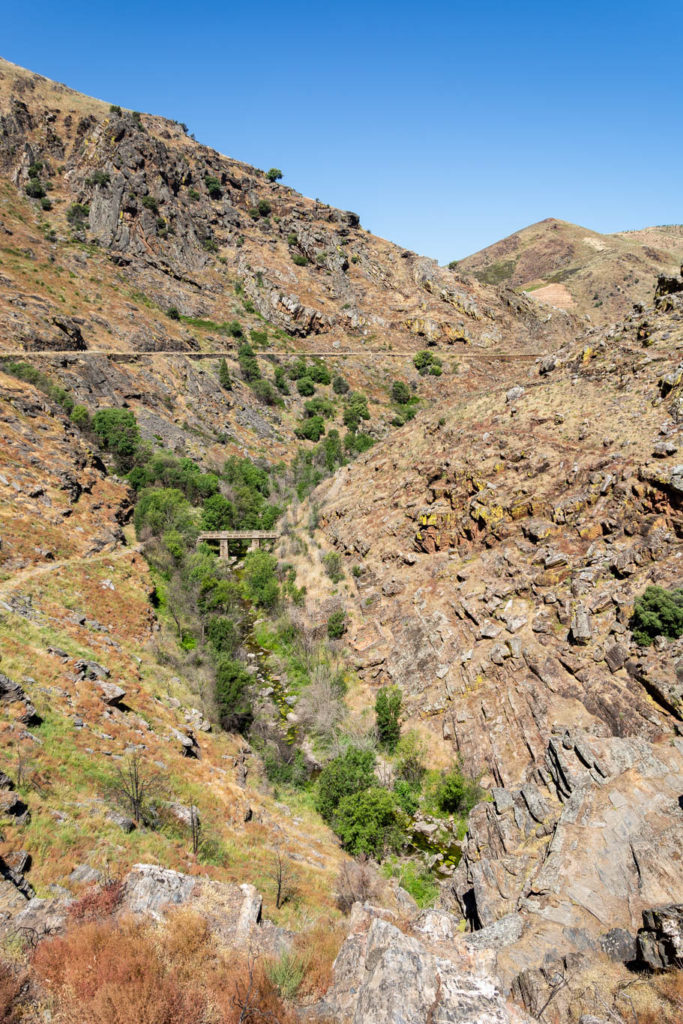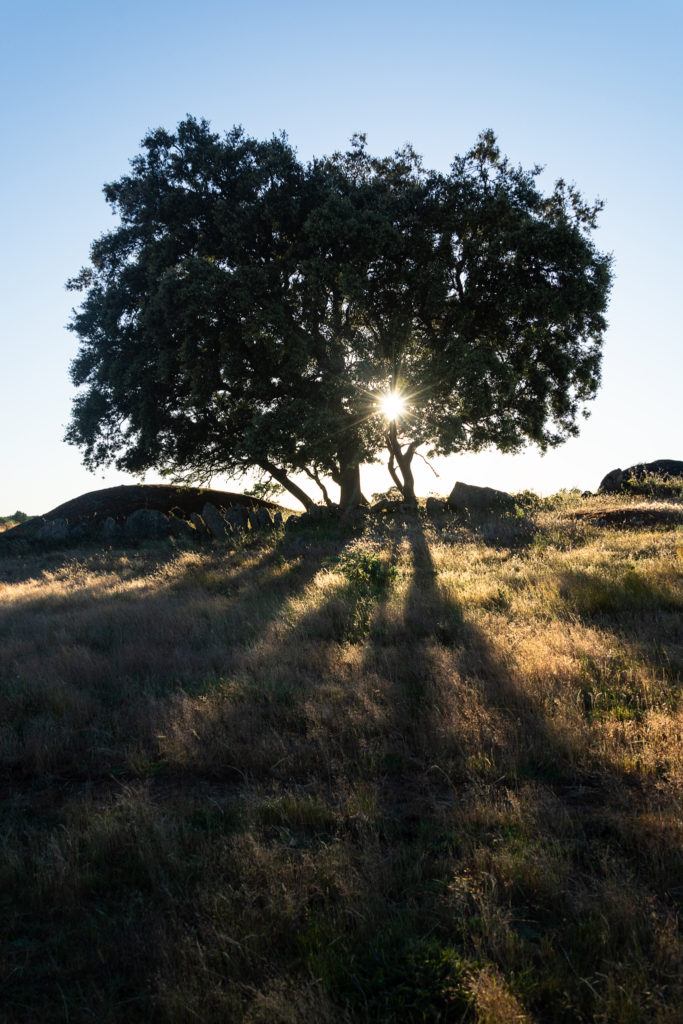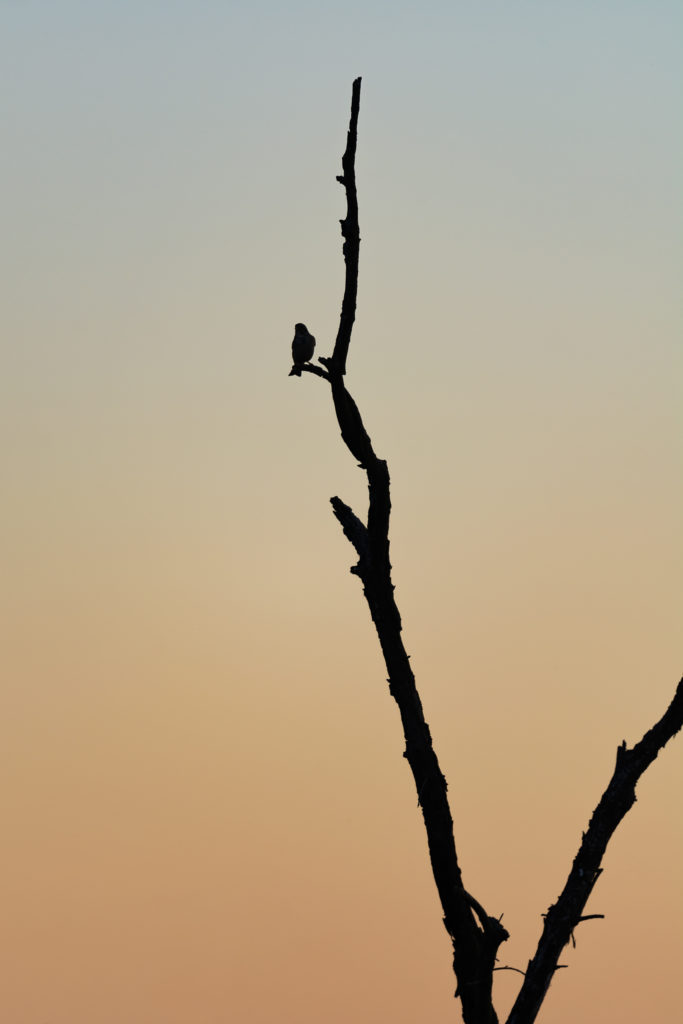In May, a photo mission took place in the Western Iberia rewilding area, and renowned photographer Juan Carlos Muñoz came to the area to capture the local landscapes and biodiversity. A young nature photographer, Daniel Santos, had the opportunity to accompany this photo mission with Juan Carlos for two days. Here is Daniel’s description of this experience.
I was scrolling through social media when a publication caught my attention. Rewilding Portugal is offering an experience to accompany for two days the nature photographer Juan Carlos Muñoz in a photo mission? I have been following the work of Juan Carlos for some time and he has been a reference for me, so this would be a unique opportunity, not only to meet him, but also to get to know the LIFE WolFlux project that Rewilding Portugal is carrying out. I saw the advert very close to the deadline and only managed to send in my application on the very last day. The next morning, Monday, I received a call, saying that I had been selected and that it was time to leave for Guarda on that same day.
On Tuesday early in the morning I met Juan Carlos, Mar (member of his team and nature journalist) and Pedro Prata, the Team Leader of Rewilding Portugal. We left immediately for the first site of the photo mission, known as Ribeira das Cabras. Pedro told me that in this place the presence of wolves has already been recorded, which is not surprising given the high quality of the habitat. This area is beautiful, whit riparian vegetation close to the river, being progressively replaced by holm oaks further from the river margin. We stopped in an area covered with different species of flowers, but the ones that caught my attention were the poppies (Papaver dubium). While Juan Carlos was capturing some images with his drone, I took the opportunity to photograph them. Although the poppies are beautiful, photographing flowers is always a challenge for me. I opted to try two different techniques, first I included the whole flower in the frame and afterwards I did a close up, which turned out much better than I expected.


Then Juan and I approached the river, hoping to find some animals to photograph. The croaking of the green frogs could be heard through the vegetation, and although they were easy to find, the light was not ideal for photographing. While Juan and I were discussing composition techniques and other subjects related to nature photography, we saw something a little different on a rock. It was a Mediterranean pond turtle (Mauremys leprosa), a species I had never seen before. The light was far from ideal, but the river was covered with flowering aquatic plants, forming a white mantle over the water, which certainly made up for the light conditions.

Shortly afterwards a black figure passed over us and again I was speechless, for it was a Black Stork (Ciconia nigra), a rare animal that nests in this region of the country.
After a delicious lunch we continued our journey through Faia Brava, where I had only been once before for brief moment, and had never had the opportunity to explore. We started out from the southern part of the reserve, looking for the Maronesa cows, which are semi-wild. These animals play a very important ecological role, once played by the large herbivores that existed in the region, namely they control vegetation growth. After a few minutes wandering on the beaten tracks, we finally found the herd feeding on a grazing area.

Farther on we came across a pool, with dozens of green frogs, and Juan and I decided to try our luck again. It took us about an hour to photograph them, and this time the images turned out to be far superior, one of which I think is the best I’ve ever taken of this species.
One of the surprises of that day was the rock art in Faia Brava, something that I had never had the opportunity to see. It is fascinating to think that thousands of years ago human beings were in that very spot making art. According to Pedro, the rock art of Braia Faia differs from most of the rest of the Côa Valley, because it is painted and not engraved on the rock and because it presents more anthropomorphic elements.


While we admired the paintings, several birds of prey glided over us, mostly griffons and Egyptian vultures, but we knew that there was a chance to observe the golden eagle, since there is a couple nesting on the cliffs of this area of the Côa valley. When we finally paid more attention to what was happening in the sky, we noticed a different silhouette from the others and concluded that it was really what we had been looking for since the early hours of the morning, a golden eagle, a species that I had never seen before. By this time the sun was approaching the horizon, but we were not finished for the day, because we still needed to photograph the Garrano horses, which, like the Maronesa cows, are in a semi-wild regime and fulfil the same ecological function. We were in the northernmost part of the reserve and about forty minutes before the light disappeared, we found the horses. The golden colour of the sunset provided an excellent environment for photographing these animals and later for photographing the landscape.


For the second day we planned to photograph some sites in the Douro International Natural Park. We stayed in a farm in the very heart of the park, but only in the morning did I realize the beauty of the place, with a stream meandering through the imposing cliffs that serve as a nesting site for birds of prey such as the golden eagle and peregrine falcon. When we were ready to take pictures, the sun was already high in the sky, but after some time I was able to find a good composition. In this place I was able to observe another species for the first time, a black vulture.

In the afternoon we went in search of a scenario that portrayed traditional shepherding, that is, we intended to photograph a shepherd dog protecting his sheep.

We travelled to a viewpoint by the river Águeda. The landscape was incredible, on the steep slopes of the valley nest several species of bird of prey, including the griffon vulture and Bonelli’s eagle. The Northeast of Portugal is an extremely biodiverse place where we can observe with some ease species that do not exist or that are much less common in other parts of the country. Once again, we were lucky and we saw, besides several griffons, a Bonelli’s eagle, a booted eagle and a short-toed eagle.


Juan wanted to photograph the colours of spring with the drone and so we drove to an area full of broom that covered the landscape in yellow. This was the ideal spot to photograph some flowers and also pollinators.


With the day coming to an end we still had another goal, namely to photograph cattle in an extensive regime. We went to a huge farm where the presence of the wolf is a possibility. Although we saw a lot of cattle, this did not seem to affect the quality of the habitat, and the landscape was dominated by open areas dotted by trees, mostly oaks, and bush zones.

After photographing the cows, the light got better and better and it was time to try our luck with other subjects. The unique beauty of this place made me look for something in the landscape that was different and that stood out. Finally, I found a tree with the sun shining through its branches that caught my eye.

With the sun almost gone, I decided to focus on the birds. First, I saw a corn bunting (Emberiza calandra) vocalizing on a dead tree and immediately realized that it could result in an excellent image with the colours of the sunset in the background. Then Juan discovered a cuckoo (Cuculus canorus) that was hunting not far from where we were. The hunt was going rather well for the cuckoo, until a woodchat shrike came in sneakily and stole a caterpillar, which the cuckoo had hunted just seconds before.


Thus ended this unforgettable adventure. I thank Rewilding Portugal for the opportunity to meet Juan Carlos Muñoz. Apart from being an excellent person, he is also a great professional and I learned a lot from him during these two days. The area of action of this project is spectacular and is full of biodiversity, and I think that with this project it will become even more special. In the end I was very keen to go back there in the future, to explore this area further and to photograph some of the species and landscapes that we did not get to see this time around.
Juan Carlos Munõz – https://www.wild-wonders.com/
Daniel Santos – https://www.danielsantosphoto.com/